| Architect |
Basil Spence |
| Date
Built |
1956 - 1962 |
| Location |
Priory
Street |
|
Coventry's
14th Century St. Michael's cathedral was
destroyed on the night of November 14th,
1940 during a massive bombing raid
targetted on the city. The decision
was made in the 1950s that the old
cathedral would not be rebuilt but
would be kept as a memorial and a new
building would be erected beside it.
A canopy supported by stone pillars
connects the two churches. The foundation stone for the new cathedral was laid by Queen Elizabeth II on March 23rd, 1956. A little over six years later the building was consecrated, on the same day that the modern replacement for Berlin's Kaiser Wilhelm Memorial Church was also consecrated. 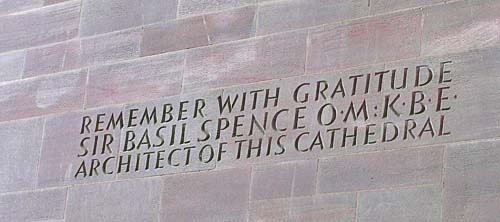 The website dedicated to Sir Basil Spence describes the building as follows, "The main body of the new building is constructed of red sandstone. Projecting out are the circular Chapel of Unity ..... 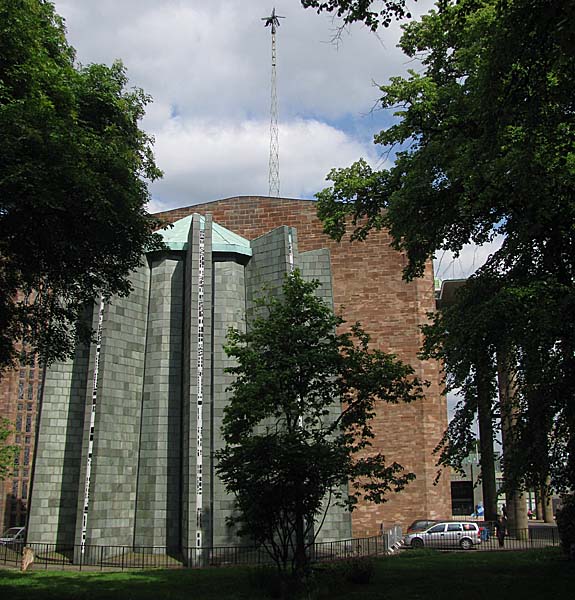 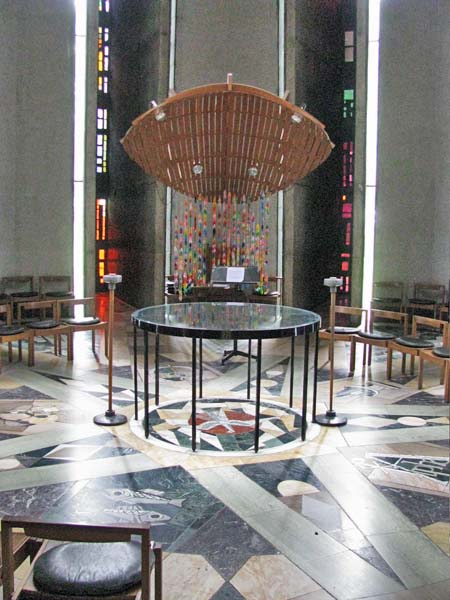 ............ and the Chapel of Industry. " 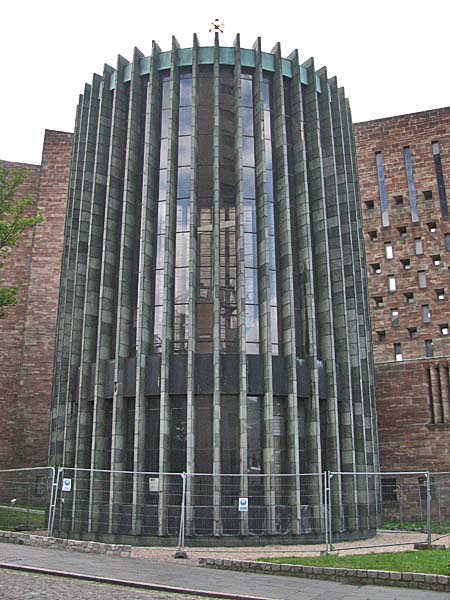 "Zigzag
walls let angled windows direct light
down the nave towards the altar."
At the end of the nave hangs Graham Sutherland's 74 foot high tapestry of "Christ in Glory". 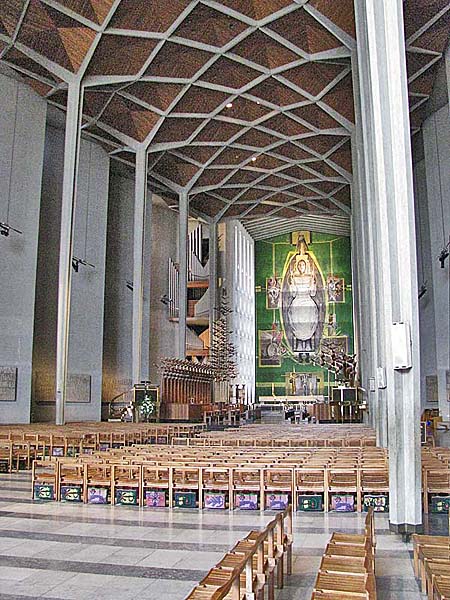 Approximately the size of a tennis court, this work of art took twelve weavers three years to complete. Facing Sutherland's tapestry at the other end of the nave is a great glass wall in which Tim Hutton has engraved a "Screen of Saints and Angels." 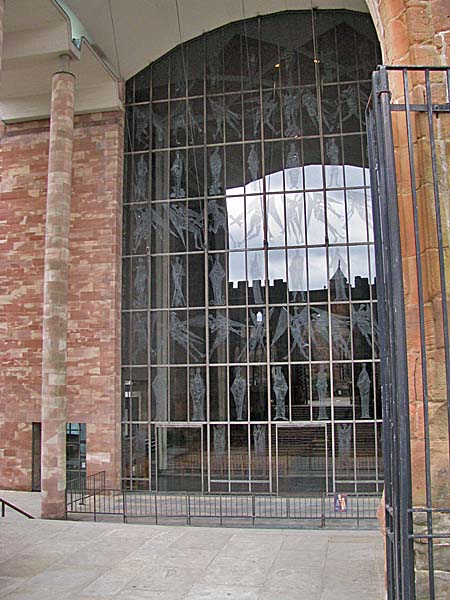 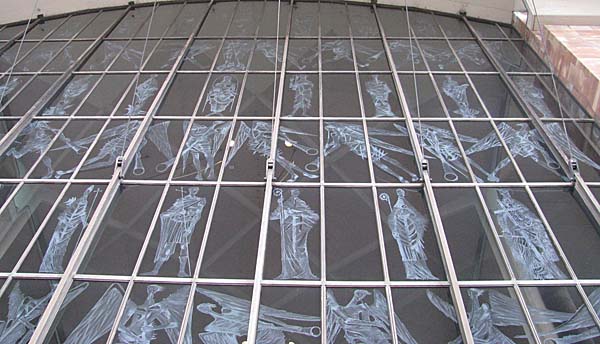 To one side is the font, made from a three-ton boulder from a hillside near Bethlehem, and behind it stands John Piper's Baptistry window made up of 195 panes of stained glass bathing the stone font in a pool of colour.  Outside Jacob Epstein's spectacular bronze sculpture of "St. Michael Subduing the Devil" stands beside the stairs that lead up from Priory Street to the entrance. 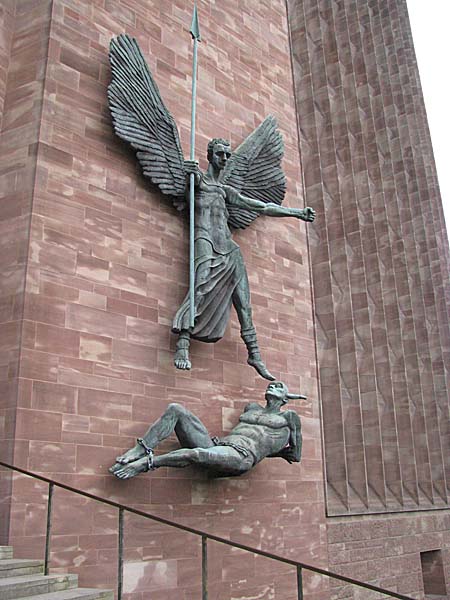 |
|
|
Cathedral
Church of St. Michael - Coventry, UK
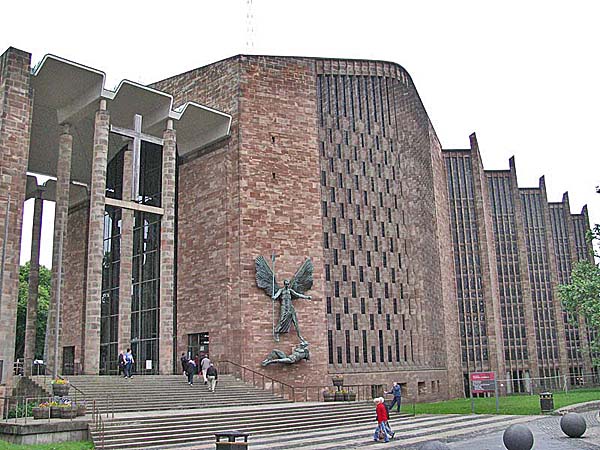 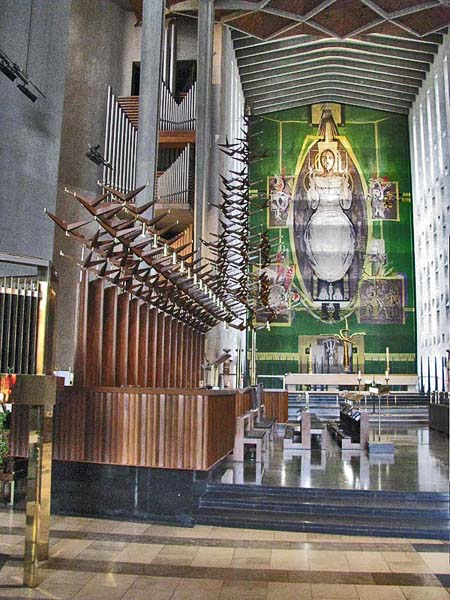 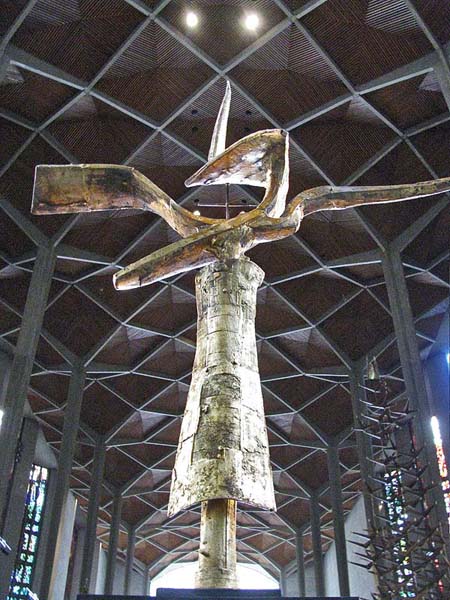 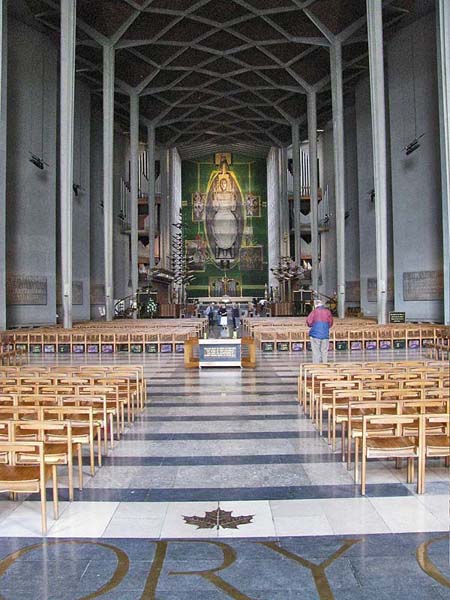 In the ruins of the
old Cathedral is this statue of Reconcilliation.
It is a copy of a statue originally entitled "Reunion"
that was presented to Bradford University in
1998. The sculptress
Josefina de Vasconcellos, who created it said, "The
sculpture was originally conceived in the aftermath
of the War. Europe was in shock, people were
stunned. I read in a newspaper about a woman who
crossed Europe on foot to find her husband, and I
was so moved that I made the sculpture. Then I
thought that it wasn't only about the reunion of two
people but hopefully a reunion of nations which had
been fighting." This copy is one of a
number that have been donated to important historical
sites including Hiroshima and the Berlin Wall
Memorial.
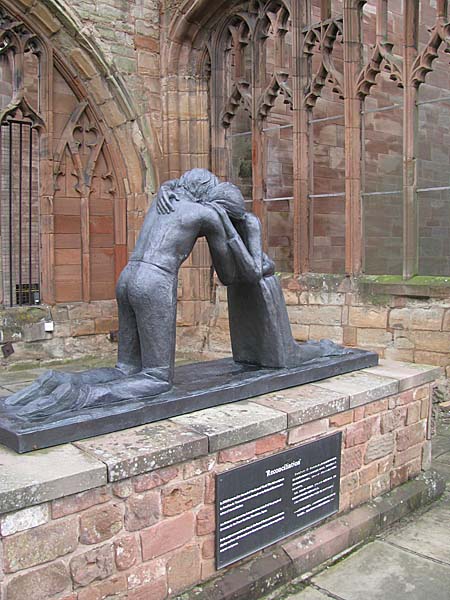 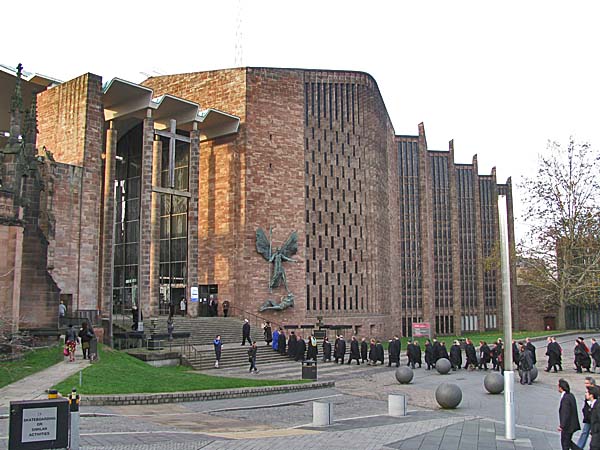 Close Window  |